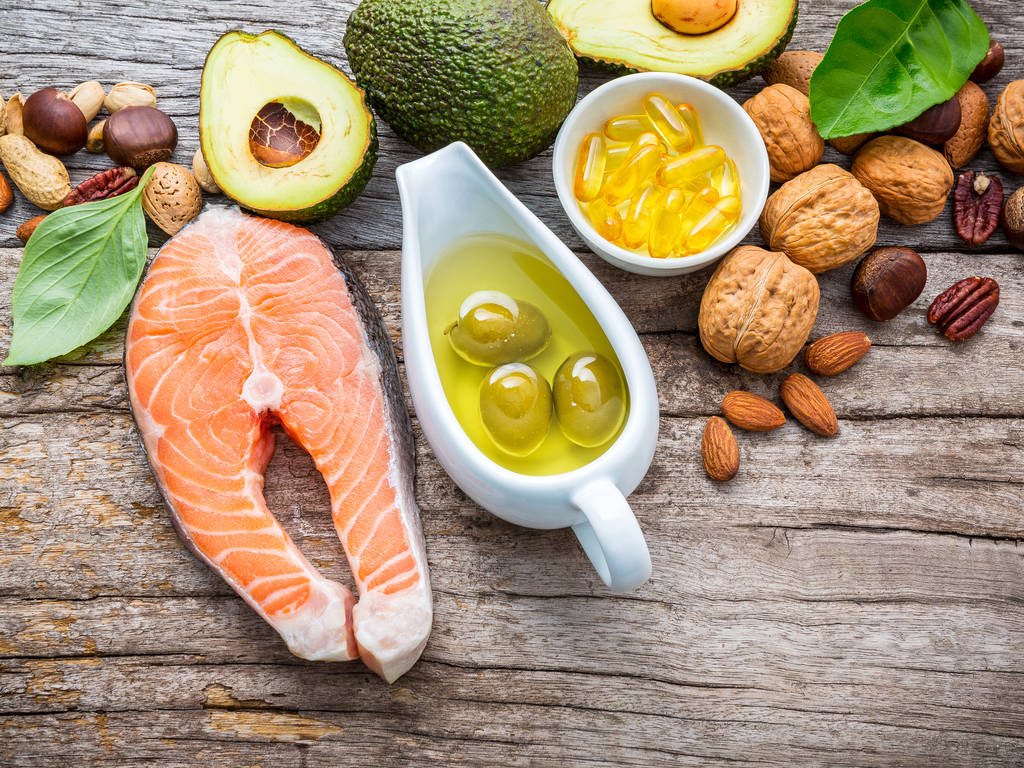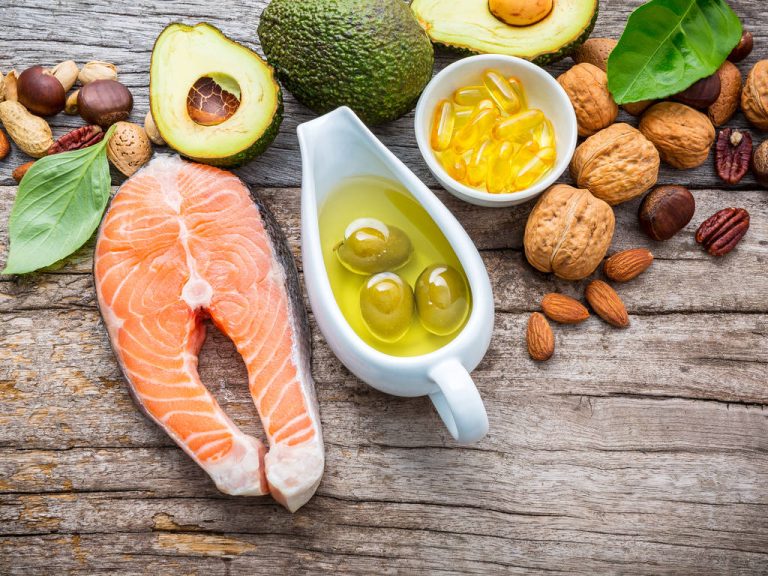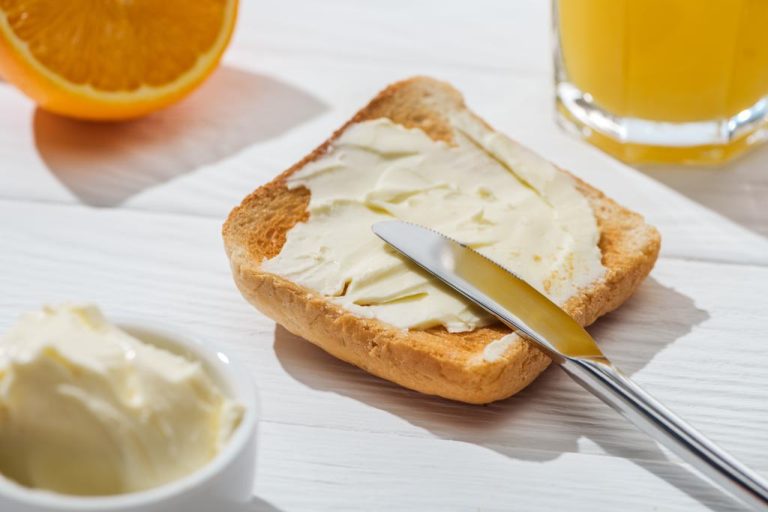Fat contained in food initially has a negative connotation for many. But a generalization is not possible here: There are also a large number of healthy fats.

Things to know about fats
Fats are not automatically unhealthy: they can have a variety of positive effects on our body and our health. For your body, they sometimes even play a vital role: They not only contribute to the natural energy supply, but are also the building blocks of the cell walls and protect them from harmful external influences. Fats are classified according to their composition of fatty acids.
Healthy fats help stabilize blood sugar levels and fulfill a satiety function. If you eat healthy fats, vitamins A, D, E and K can be absorbed by your body. The reason for this is that these vitamins have fat-soluble properties.
According to the German Society for Nutrition, adults should cover 30 percent of their daily energy requirements with fats: It is therefore important that you also consume healthy fats every day. This is around 60 to 100 grams per day. Depending on physical activity and weight, however, this information can also vary. However, the high calorie density of around 9 kcal per gram should not be ignored either. If you eat too much fat over a long period of time and only burn a few calories, this can lead to obesity, high blood pressure or arteriosclerosis. In the end, it all comes down to the right, balanced measure.
Fatty acids: There are
Fatty acids are essential for many bodily processes. These are also called essential fatty acids. A basic distinction is made between saturated fatty acids, monosaturated and polysaturated fatty acids. Saturated fatty acids are considered unhealthy in larger amounts. The reason for this is the taste-enhancing and appetizing properties of these fatty acids, which is why overconsumption of foods containing them can quickly occur. Consequently, this can lead to cardiovascular disease, dementia, diabetes, high cholesterol and narrowing of blood vessels. However, these effects are only to be expected in the long term and in excess: You should still consume a healthy amount of saturated fat, as these are important for the natural functioning of the nervous system.
In contrast, the unsaturated fatty acids are considered to be the healthier fats. They have anti-inflammatory properties and play a significant role in regulating normal blood clotting and cholesterol levels. Fats, which are composed of unsaturated fatty acids, also guarantee the absorption of the important vitamins A, D, E and K.
In this context, a distinction is also made between polyunsaturated and monosaturated fatty acids. Here you have to take a look at the chemical structure of the acids: While monounsaturated fatty acids have only one double bond in the hydrocarbon chain, polysaturated fatty acids have at least two double bonds. Depending on where the double bond is located, the polysaturated fatty acids can also be divided into subgroups. The best known are the omega-6 and omega-3 fatty acids. It is also important with these to eat a balanced amount so that all bodily functions are maintained ideally. According to the German Society for Nutrition, the ratio of omega-6 to omega-3 in the diet should be 5:1.
Overview of foods with healthy fats
Healthy fats are found in many foods, both plant and animal. This makes it possible for you to cover your daily fat requirements through a varied integration of these foods into your diet. A particularly high fat content can be found in nuts in particular. These include, for example, walnuts, hazelnuts, almonds, peanuts, Brazil nuts and cashew nuts. Natural yoghurt can also convince with a digestive property and a content of about 1.16 grams of monounsaturated fatty acids per 100 grams.
The avocado also has a particularly high proportion of unsaturated fatty acids with around 87% and olive oil with around 86%. If you incorporate these regularly into your diet, you can easily cover your fat requirements. Flaxseed*, cheese, eggs, rapeseed oil and dark chocolate are also known for being rich in unsaturated fatty acids.
Polyunsaturated fatty acids are mainly found in fish. A good example of this is salmon: it has a content of around 77% unsaturated fatty acids. But not only salmon contains a lot of vegetable fats: mackerel, herring or tuna can also be ideally integrated into a healthy and balanced diet* to cover the fat requirement.
Ghee and coconut oil: trend products can really do that
The trend products coconut oil and ghee are intended to be a healthier alternative to classic oil and butter. For a direct comparison, it is important to take a look at the nutrients and not to ignore the fat content.
Ghee is also commonly referred to as concentrated butter. During the production of ghee, the water and milk protein contained in the milk are removed, resulting in a product with a fat content of almost 100 percent. According to the Butter Ordinance, butter only has a fat content of at least 82%. In addition to the fats it contains, an advantage of ghee is that it is almost free of lactose and milk protein: this is a great alternative for people with an intolerance. Comparing ghee to butter, ghee contains about 8g saturated, 4g monounsaturated and 0.5g polyunsaturated fat per tablespoon. Butter, on the other hand, has only 7g of saturated fat, 3g of monounsaturated fat and, like ghee, 0.5g of polyunsaturated fat.
Coconut oil has also been a trend for a long time, as it is said to be particularly healthy. However, this claim has not held up: studies that prove a particularly healthy effect of coconut oil cannot be found. Compared to canola, walnut or olive oil, coconut oil has no proven advantage. It should also be noted that coconut oil consists of over 90% saturated fatty acids. Although these are not generally harmful, they should only be enjoyed in moderation. In general, coconut oil can be classified as healthy if you use it occasionally. For regular use, however, you can also ideally use conventional oils, which contain a high proportion of unsaturated fatty acids.

Cooking fats: These are particularly healthy
Many oils are particularly rich in healthy fats. The vegetable fats in the oils have a positive effect on your health. When frying, it is particularly important that you use a heat-resistant oil: The oil should have a so-called high smoke point so that it does not decompose so quickly at the high temperatures.
The more saturated fat and oleic acid (an unsaturated fatty acid) the fat contains, the higher the smoke point. So if you are looking for an oil for frying, coconut oil can be an ideal alternative here. It is heat resistant to temperatures up to 200°C. When choosing coconut oil*, it is important that you pay attention to organic quality and a fair trade logo. The oil often comes from exotic countries, which is why it is classified as rather critical in terms of environmental aspects.
Rapeseed oil* and sunflower oil are also ideal for frying due to their heat stability. These have a high proportion of unsaturated fatty acids, which is why you should make sure that the oils in the pan do not get too hot when heating them up: this is the only way to preserve them.











